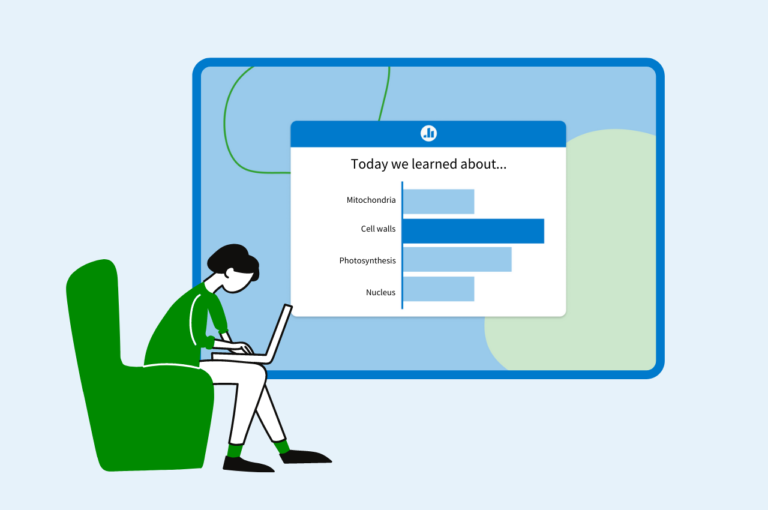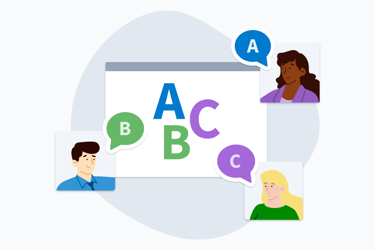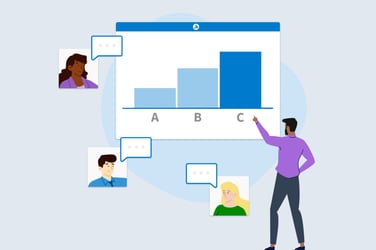Employee Training, Learning, and Development

Table of Contents
1. What is Employee Training, Learning, and Development?
2. What are the Benefits of Employee Training, Learning, and Development for the Employee?
3. What are the Benefits to the Organization?
4. What are the Key Features of an Effective Learning and Development Program?
5. Examples of Employee Training, Learning, and Development Programs
What is Employee Training, Learning, and Development?
Learning and development (L&D) refers to the structured process by which organizations facilitate the acquisition of knowledge, skills, abilities, and behaviors necessary for employees to perform their current roles effectively and to prepare them for future responsibilities within the organization.
Learning and development initiatives aim to ensure that employees have the necessary skills, knowledge, and capabilities to contribute effectively to the organization's goals in the present while also preparing them for future roles and responsibilities. Effective L&D programs not only benefit individual employees by enhancing their job performance and career prospects but also contribute to the overall success and competitiveness of the organization.
What are the Benefits of Employee Training, Learning, and Development for the Employee?
For employees, learning doesn't halt upon securing a job. It's a continuous journey of expanding their knowledge, discovering new breakthroughs in their industry, and finding new and creative ways to do their work. Learning and development (L&D) programs provide numerous benefits, including skill development. These programs encompass technical and soft skills alongside industry-specific knowledge and professional certifications. Improving both technical and soft skills can help an employee be more productive and efficient in their role and operate on a higher level.
Participation in L&D activities is a gateway to expanding expertise and preparing for leadership roles. Through leadership training, mentorship, and cross-functional projects, employees can develop the skills and knowledge necessary for advancement. This investment in personal growth not only increases job satisfaction and motivation but also demonstrates the organization's commitment to their development. The improved performance resulting from L&D initiatives can open doors to recognition, advancement opportunities, and rewards.
Moreover, these programs empower employees with the confidence to tackle new challenges, fostering personal growth and fulfillment. They also enhance adaptability and resilience in navigating dynamic work environments, ensuring relevance amidst industry changes. Actively participating in L&D activities not only enhances job security but also makes employees invaluable assets. In a nutshell, L&D equips employees to thrive professionally, acquire new skills, expand knowledge, and pursue career goals.
What are the benefits of learning and development for the organization?
Investing in employee learning and development is important for the success of an organization. Providing L&D opportunities can be as beneficial to an organization as buying new equipment and technology. Here are a few reasons why companies should invest in their employees:
- Talent Attraction and Retention: In a competitive job market, offering robust L&D programs can be a powerful tool for attracting top talent. Potential employees are often attracted to companies that prioritize employee development and offer opportunities for growth and advancement. Similarly, employees are likelier to stay with a company that invests in their ongoing learning and career progression.
- Innovation and Creativity: Continuous learning fosters a culture of innovation and creativity within the organization. Employees who are encouraged to explore new ideas, experiment with different approaches, and continuously expand their knowledge are more likely to contribute innovative solutions and drive organizational growth.
- Enhanced Performance and Productivity: By investing in L&D initiatives, companies can ensure their employees have the necessary skills and knowledge to perform their jobs effectively. Well-trained and knowledgeable employees are more likely to be productive, efficient, and capable of delivering high-quality work.
- Employee Engagement and Satisfaction: Providing opportunities for learning and development demonstrates that the company values its employees' growth and invests in their professional development. This, in turn, fosters higher levels of employee engagement, satisfaction, and loyalty. Employees are more likely to remain with a company that supports their career development goals.
- Adaptability and Agility: In today's rapidly evolving business environment, companies need employees who can adapt to changes, embrace new technologies, and respond to shifting market demands. L&D programs help employees stay updated on industry trends, emerging technologies, and best practices, enabling the organization to remain competitive and agile.
Read more: What is employee training and why should you invest in it?
What are the Key Features of an Effective Learning and Development Program?
An effective learning and development (L&D) program should encompass several key features to ensure its success in meeting the needs of both the organization and its employees. Here are some essential features:
Alignment with Organizational Goals: The L&D program should be closely aligned with the strategic objectives and priorities of the organization. Training initiatives should address skill gaps, performance needs, and future talent requirements identified through strategic workforce planning.
Needs Assessment: Before designing the L&D program, conducting a thorough needs assessment is essential to identify the specific learning needs and priorities of employees and the organization. This may involve surveys, interviews, performance evaluations, and analysis of business metrics to determine areas for improvement and development.
Clear Objectives and Outcomes: Each learning initiative should have clear, measurable objectives and desired outcomes. Employees should understand what they are expected to learn and how it relates to their roles, career development, and organizational goals. Setting specific learning goals helps track progress and evaluate the program's effectiveness.
Varied Learning Modalities: Effective L&D programs incorporate a variety of learning modalities to accommodate diverse learning styles and preferences. This may include instructor-led training, e-learning modules, hands-on workshops, simulations, on-the-job training, peer learning, mentoring, and self-paced learning resources.
Engagement and Interactivity: To enhance learning retention and engagement, L&D activities should be interactive, engaging, and participatory. Incorporating group discussions, case studies, role-playing exercises, gamification elements, and multimedia content can make learning more enjoyable and effective.
💡Pro tip: Insert a Poll Everywhere Q&A activity between training slides or workshop sessions to do a quick check on how your employees are feeling about the training and address any questions they might have.
Feedback and Evaluation: Regular feedback and evaluation mechanisms should be built into the L&D program to assess the effectiveness of training interventions and gather insights for improvement. Solicit feedback from participants, supervisors, and stakeholders to identify strengths, weaknesses, and areas for enhancement.
Accessibility and Inclusivity: Ensure that learning resources and opportunities are accessible to all employees, including those with diverse backgrounds, abilities, and learning preferences. Provide accommodations and support as needed to ensure inclusivity and equity in access to learning and development opportunities.
Evaluation of Impact and ROI: Assess the impact of the L&D program on employee performance, job satisfaction, retention, and organizational outcomes. Measure return on investment (ROI) by comparing training costs against the benefits gained, such as increased productivity, reduced turnover, and improved business results.
By incorporating these key features into the design and implementation of the L&D program, organizations can create a comprehensive and effective learning environment that supports employee development, enhances organizational performance, and drives business success.
Read more: Check out how Advicoach used Poll Everywhere to gain powerful insights into their employee training.
Examples of Employee Training, Learning, and Development Programs
Employee learning and development (L&D) programs can take various forms to address different learning needs and objectives. Here are some common types of employee L&D programs:
1. Formal Training Programs: Structured training programs designed to impart specific knowledge, skills, or competencies to employees. These programs may include instructor-led training, workshops, seminars, webinars, and classroom-based courses.
2 On-the-Job Training (OJT): Learning opportunities provided within the workplace allow employees to acquire new skills and knowledge while performing their regular job duties. OJT may involve job shadowing, coaching, mentoring, or apprenticeship programs.
3. E-Learning or Online Training: Training delivered through digital platforms, learning management systems (LMS), or online courses. E-learning programs offer flexibility, scalability, and accessibility, allowing employees to learn at their own pace and convenience.
4. Leadership Development Programs: Programs designed to identify and develop future leaders within the organization. These programs may include leadership workshops, executive coaching, mentoring, and assessments to cultivate leadership skills and competencies.
5. Cross-Functional Training: Opportunities for employees to gain exposure to different departments, roles, or functions within the organization. Cross-functional training programs help employees develop a broader understanding of the organization and build versatile skill sets.
6. Soft Skills Development: Programs focused on developing interpersonal, communication, teamwork, problem-solving, and emotional intelligence skills. Soft skills development programs enhance employees' ability to collaborate effectively, communicate clearly, and navigate interpersonal relationships in the workplace.
7. Technical Skills Training: Training programs enhance employees' technical skills and expertise in specific areas such as software applications, programming languages, technical certifications, and industry-specific tools and technologies.
8. Professional Development: Opportunities for employees to pursue ongoing professional growth and career advancement. Professional development programs may include attending conferences, workshops, seminars, pursuing advanced degrees, or obtaining professional certifications relevant to their field.
9. Diversity, Equity, and Inclusion (DEI) Training: Training programs focused on promoting diversity, equity, and inclusion within the workplace. DEI training raises awareness of unconscious biases, fosters cultural competency, and provides strategies for creating an inclusive work environment.
10. Compliance Training: Mandatory training programs designed to ensure employees understand and comply with relevant laws, regulations, and company policies. Compliance training topics may include workplace safety, data privacy, harassment prevention, and ethics training.
11. Wellness and Well-being Initiatives: Programs aimed at promoting employee health, wellness, and work-life balance. Wellness initiatives may include workshops on stress management, mindfulness, physical fitness, nutrition, and mental health awareness.
These are just a few examples of the diverse range of employee learning and development programs that organizations can implement to support employee growth, development, and success in the workplace. The specific types of programs chosen will depend on the organization's goals, industry, workforce needs, and available resources.
Employee Training, Learning, and Development Resources
Learn how to incorporate interactive elements into your employee training program.
Get started with Poll Everywhere
Poll Everywhere is a vital employee engagement tool to add to your L&D toolkit. From fun icebreakers to start off a workshop to quick comprehension checks with Multiple Choice polls, Poll Everywhere can turn any L&D employee training session into an interactive two-way conversation. Sign up today to learn more about how Poll Everywhere can help you create engaging L&D experiences.







